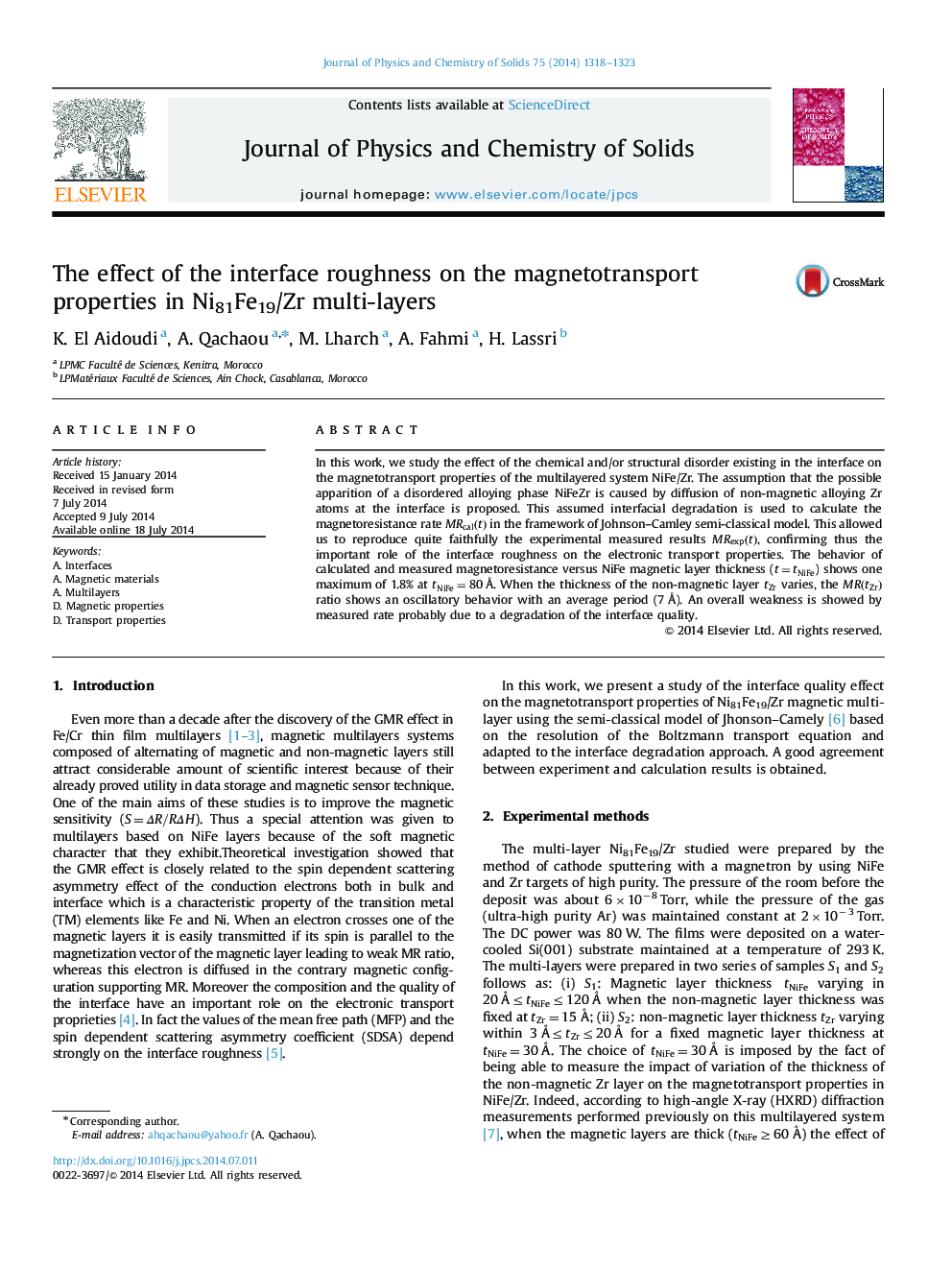| Article ID | Journal | Published Year | Pages | File Type |
|---|---|---|---|---|
| 1515642 | Journal of Physics and Chemistry of Solids | 2014 | 6 Pages |
Abstract
In this work, we study the effect of the chemical and/or structural disorder existing in the interface on the magnetotransport properties of the multilayered system NiFe/Zr. The assumption that the possible apparition of a disordered alloying phase NiFeZr is caused by diffusion of non-magnetic alloying Zr atoms at the interface is proposed. This assumed interfacial degradation is used to calculate the magnetoresistance rate MRcal(t) in the framework of Johnson-Camley semi-classical model. This allowed us to reproduce quite faithfully the experimental measured results MRexp(t), confirming thus the important role of the interface roughness on the electronic transport properties. The behavior of calculated and measured magnetoresistance versus NiFe magnetic layer thickness (t=tNiFe) shows one maximum of 1.8% at tNiFe=80Ã
. When the thickness of the non-magnetic layer tZr varies, the MR(tZr) ratio shows an oscillatory behavior with an average period (7Ã
). An overall weakness is showed by measured rate probably due to a degradation of the interface quality.
Keywords
Related Topics
Physical Sciences and Engineering
Materials Science
Electronic, Optical and Magnetic Materials
Authors
K. El Aidoudi, A. Qachaou, M. Lharch, A. Fahmi, H. Lassri,
